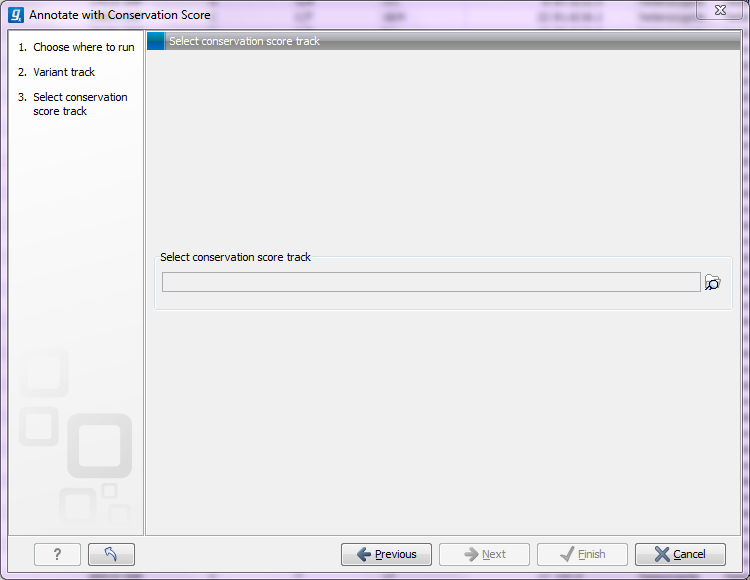Conservation score annotation
The possible functional consequence of a variant can be interrogated by comparing to a conservation score that tells how conserved this particular position is among a set of different species. The underlying line of thought is that conserved bases are functionally important - otherwise they would have been mutated during evolution. If a variant is found at a position that is otherwise well conserved, it is an indication that the variant is functionally important. Of course this is only a prediction, as non-conserved regions could have functional roles too.
Conservation scores can be computed by several tools e.g. PhyloP and PhastCons and can be downloaded as pre-computed scores from an whole genome alignment of different species from different sources. See how to find and import tracks with conservation scores in Import tracks.
Toolbox | Resequencing (![]() ) | Functional Consequences | Annotate with Conservation Score
) | Functional Consequences | Annotate with Conservation Score
Select the variant track as input and when you click Next you will need to provide the track with conservation scores (see figure 27.73).

Figure 27.73: The conservation score track.
In the resulting track, all the variants will have quality scores annotated, and this can be used for sorting and filtering the track (see Showing a track in a table).
